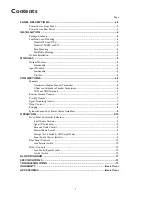
Mute Control
Each priority bus (High, Medium, and Low) can be externally activated.
This allows priority buses of two or more Power Vector units to be
linked together for system expansion purposes. A particular mute
priority can be externally forced by shorting that priority’s bus terminal
to the C terminal of the Mute Control (the C terminal is the system
ground). Forcing the H priority bus this way will mute all modules except
for modules set for priority level
1
(highest priority). Forcing the M
priority bus will mute modules set for priority levels 3 or 4, but not
levels
1
or 2, and forcing the L priority bus will only mute modules set
at priority level 4. See section on
Bridging
and illustration on page 8.
Bridging
This connector makes the Power Vector’s mix bus available externally and
allows the connecting of Power Vector units for system expansion and
simple room combining.
This function is bi-directional.Any signal received will be amplified and any
signal sent can be used by another Power Vector amp.The signal levels at
the bridging jack will drop by one-half with two Power Vectors tied
together and by two-thirds with three units tied together. Because of the
attenuation of the bridging signal, due to the signal loading of other Power
Vectors, it is not recommended that more than three units be connected
together. See
Mute Control
section and the illustration below for additional
information.
System Expansion of Power Vector Amplifiers
Using the bridging RCA connector, it is possible to connect two or more Power Vector amplifiers. It is not
recommended that more than three amplifiers be bridged together due to bridging loss.When connecting mute
control functions, make certain that the wiring is consistent (H to H, M to M, and so forth).
See illustration below.
8
Summary of Contents for Power Vector V100
Page 13: ...Block Diagram 11 ...


































